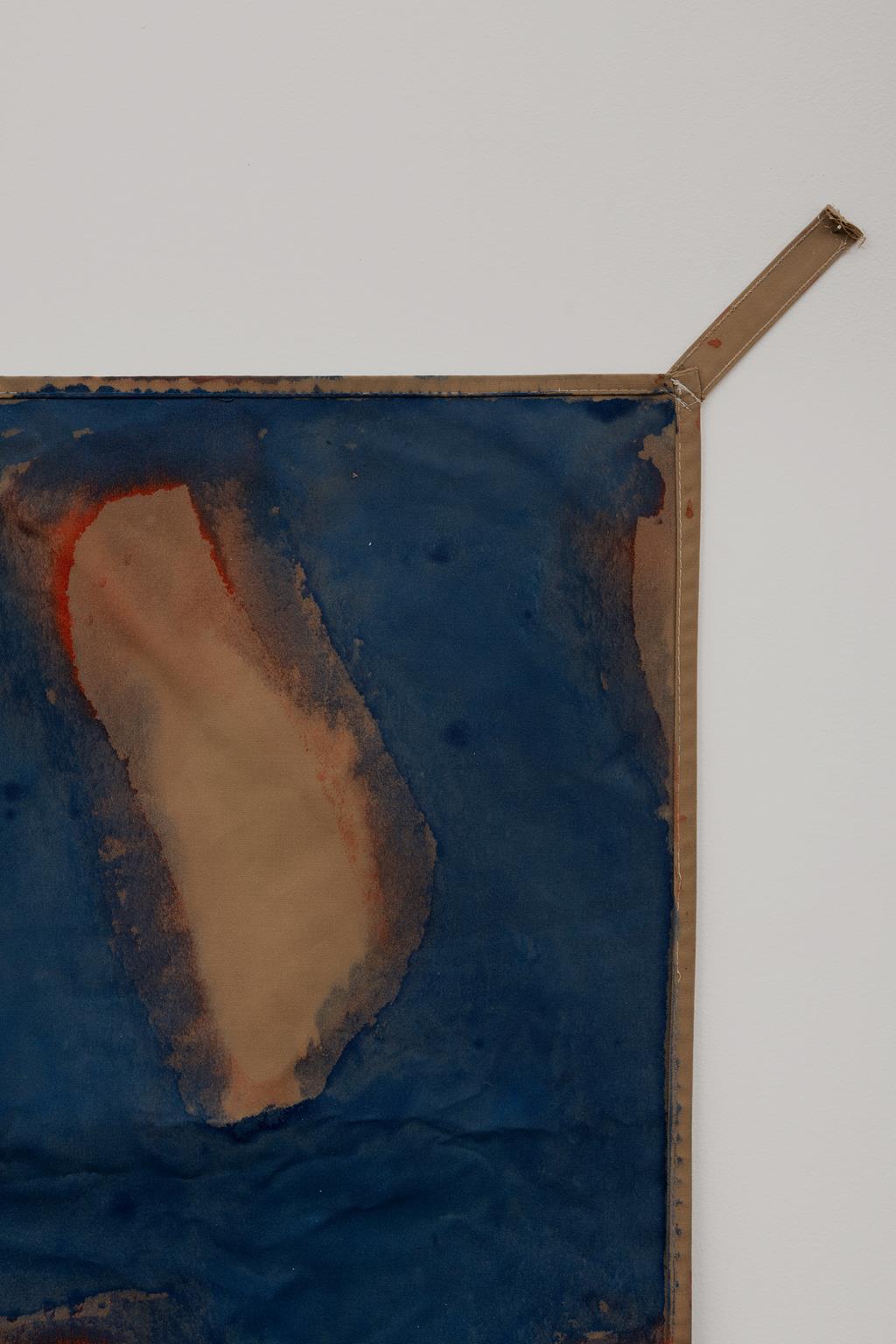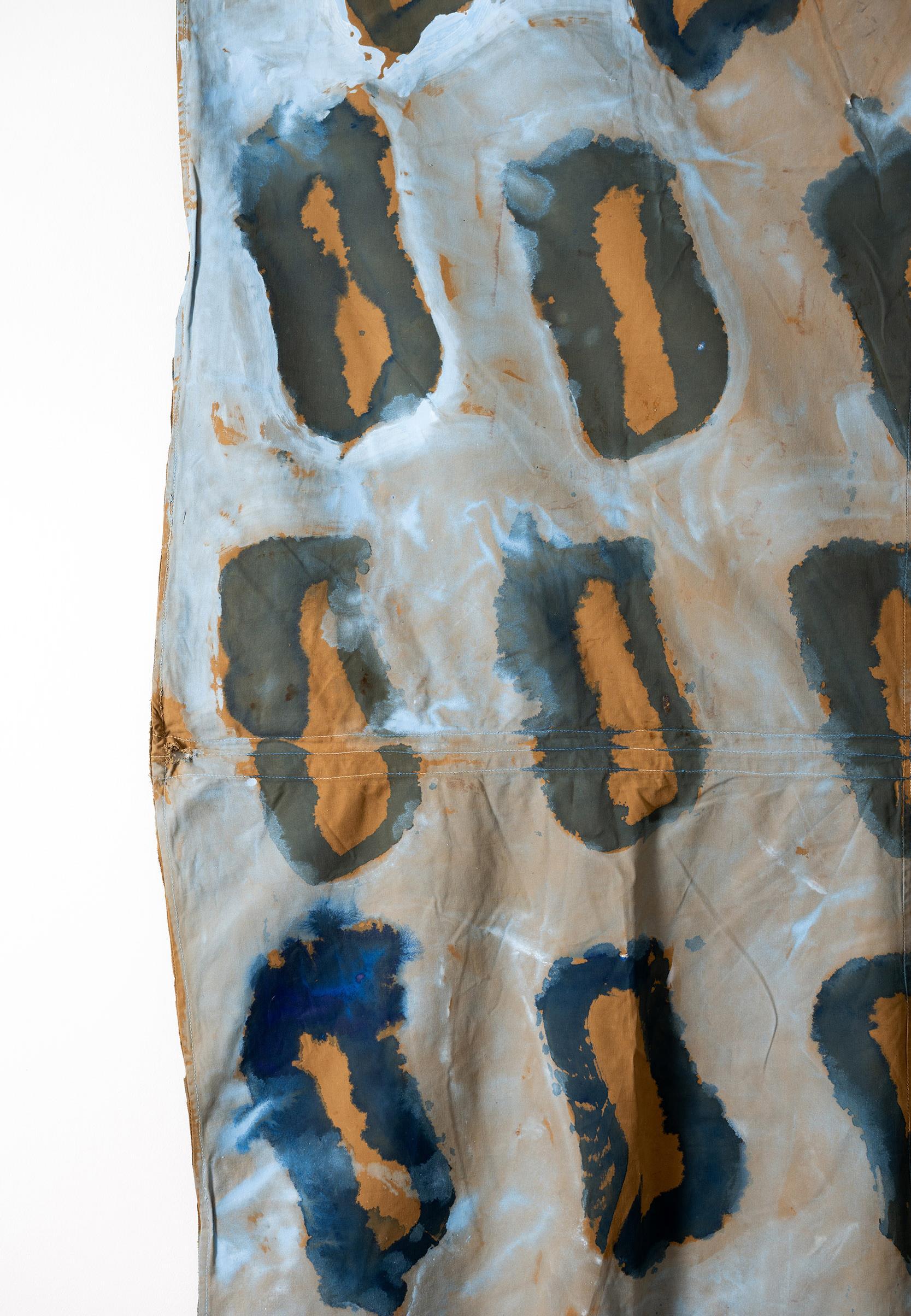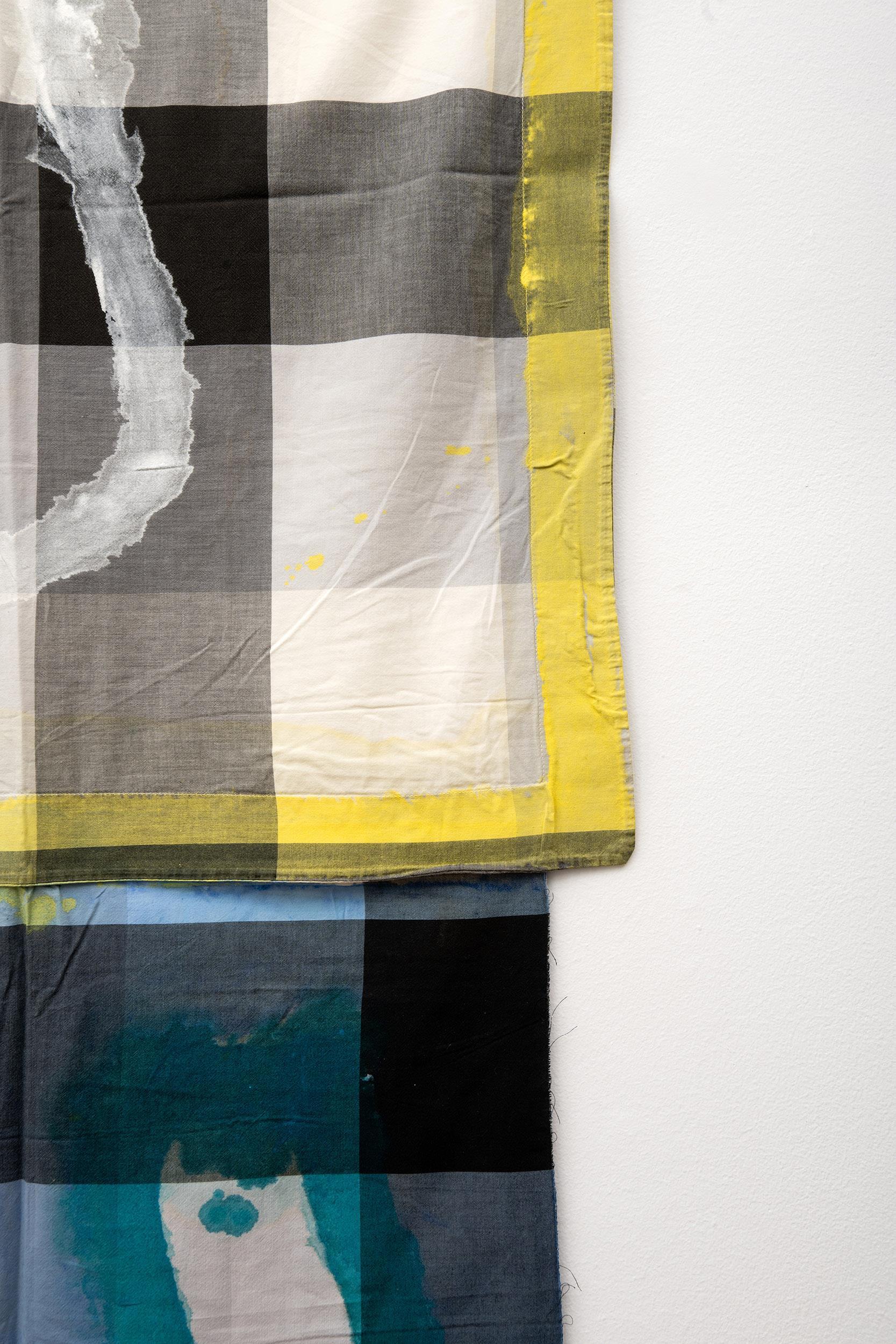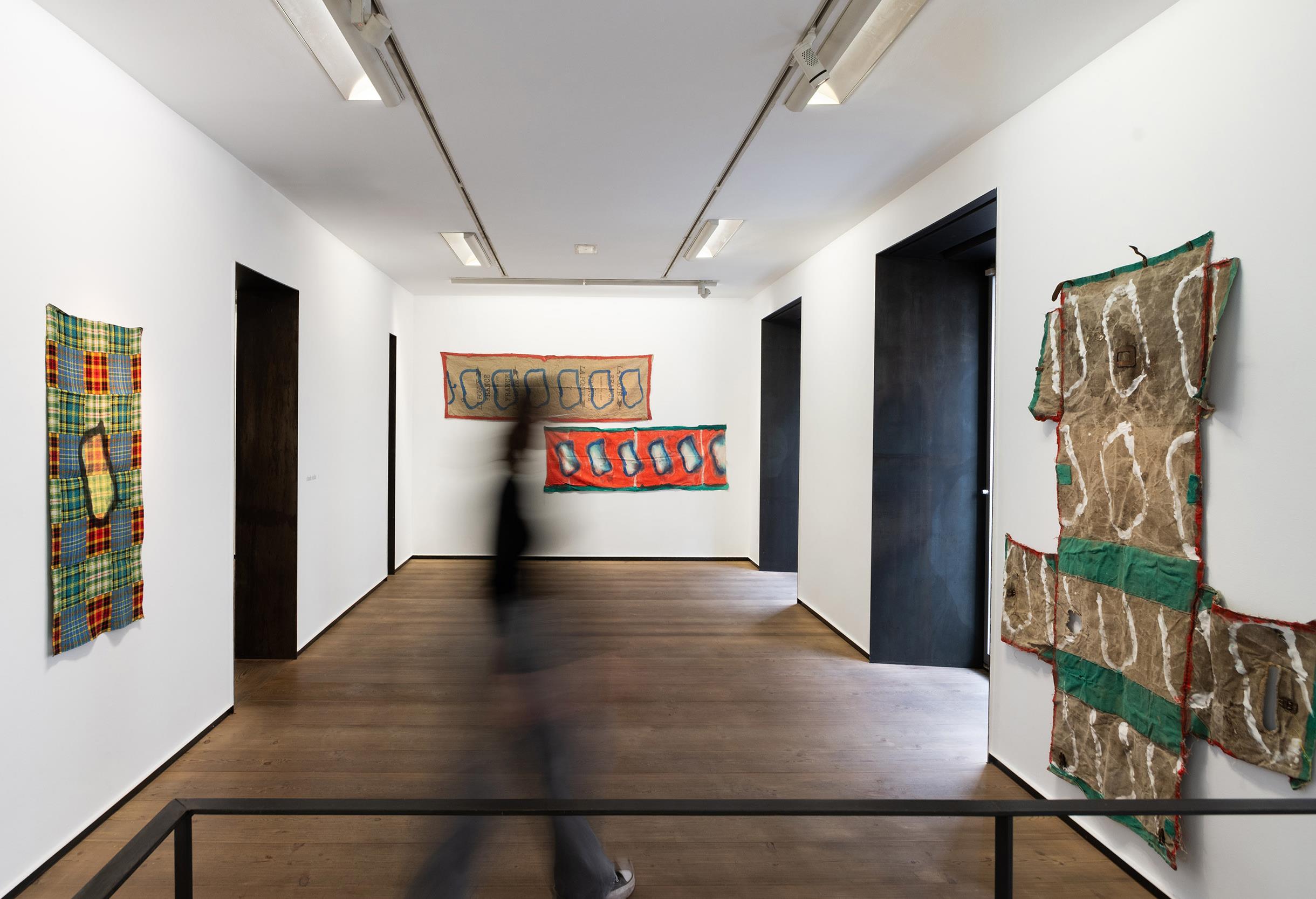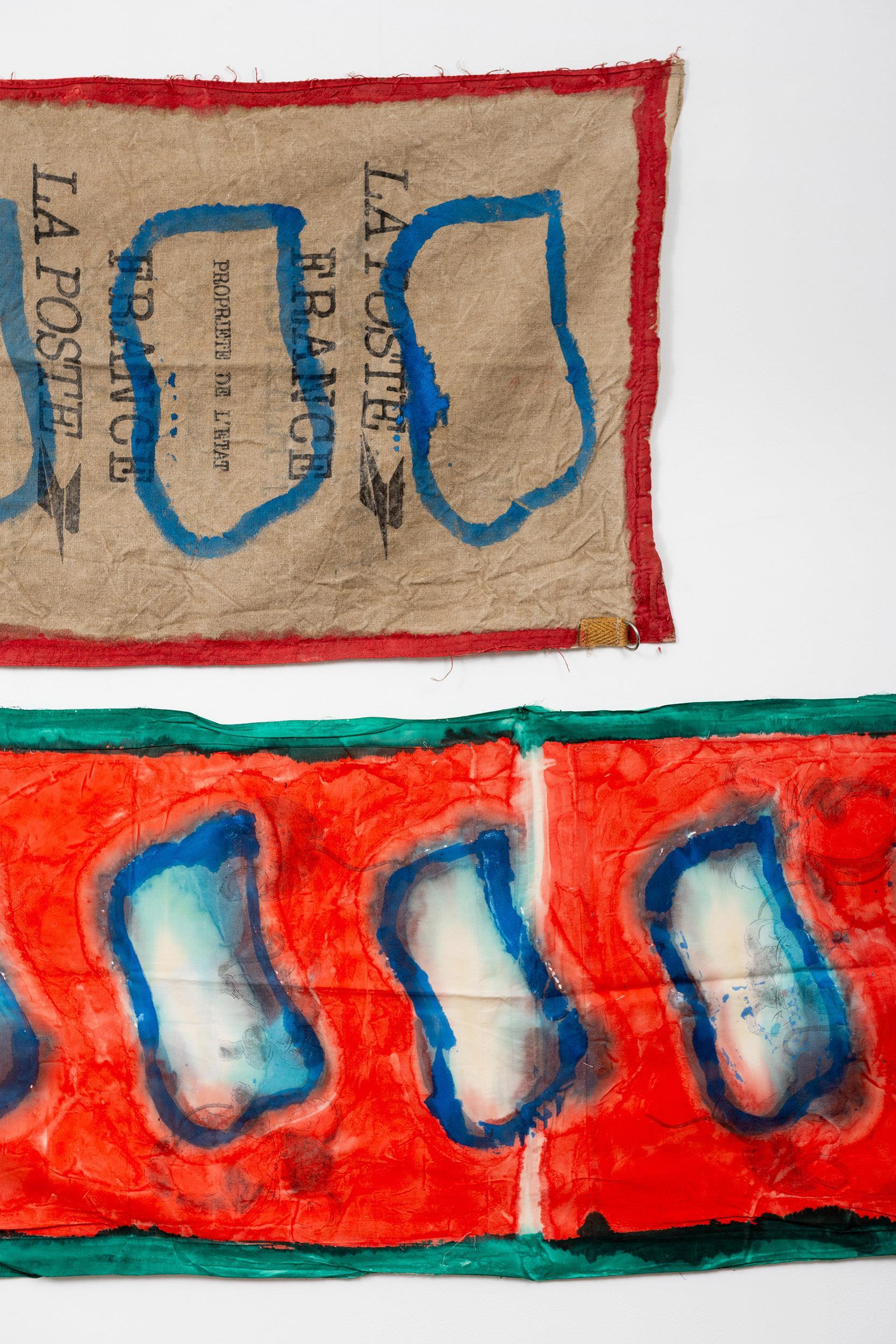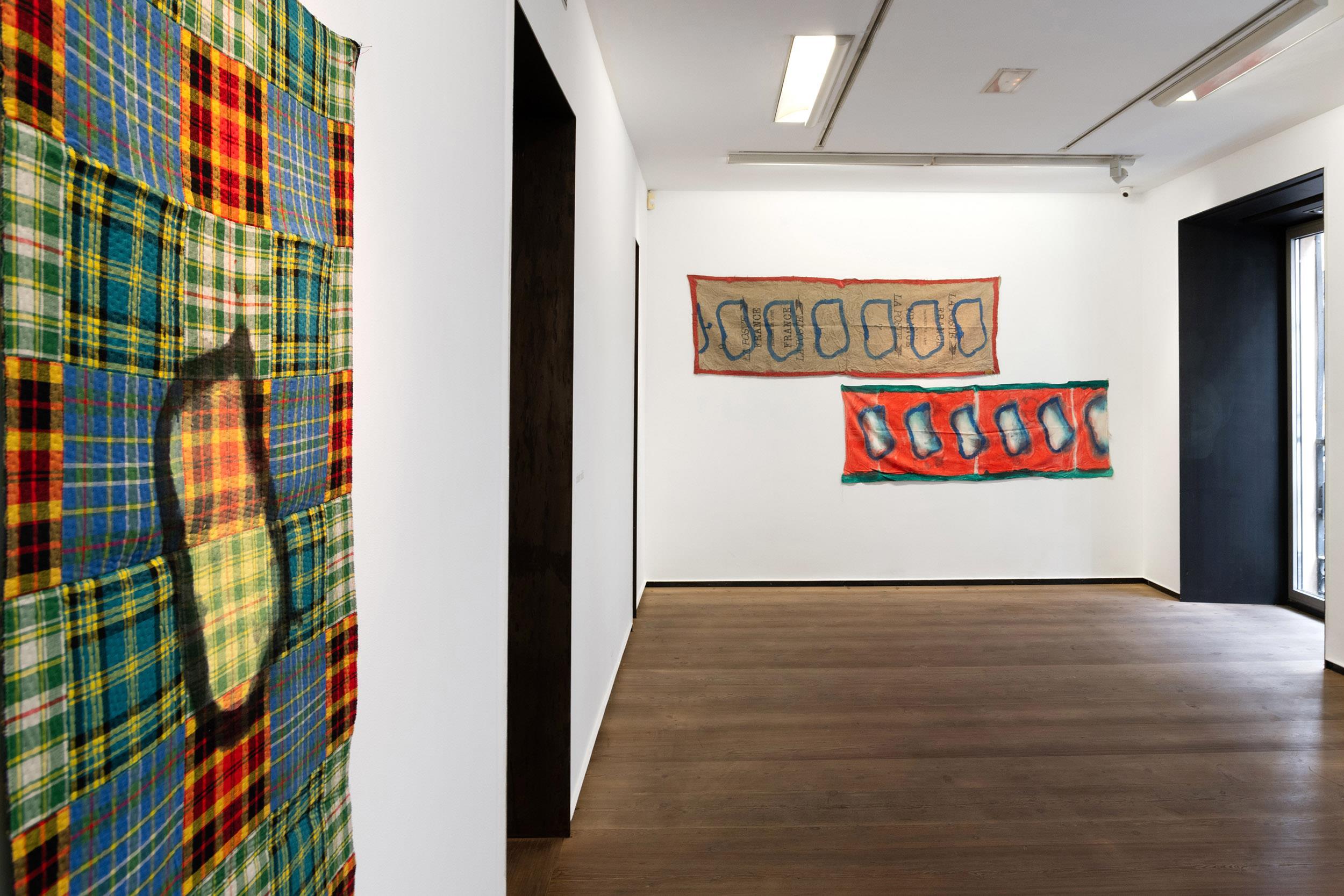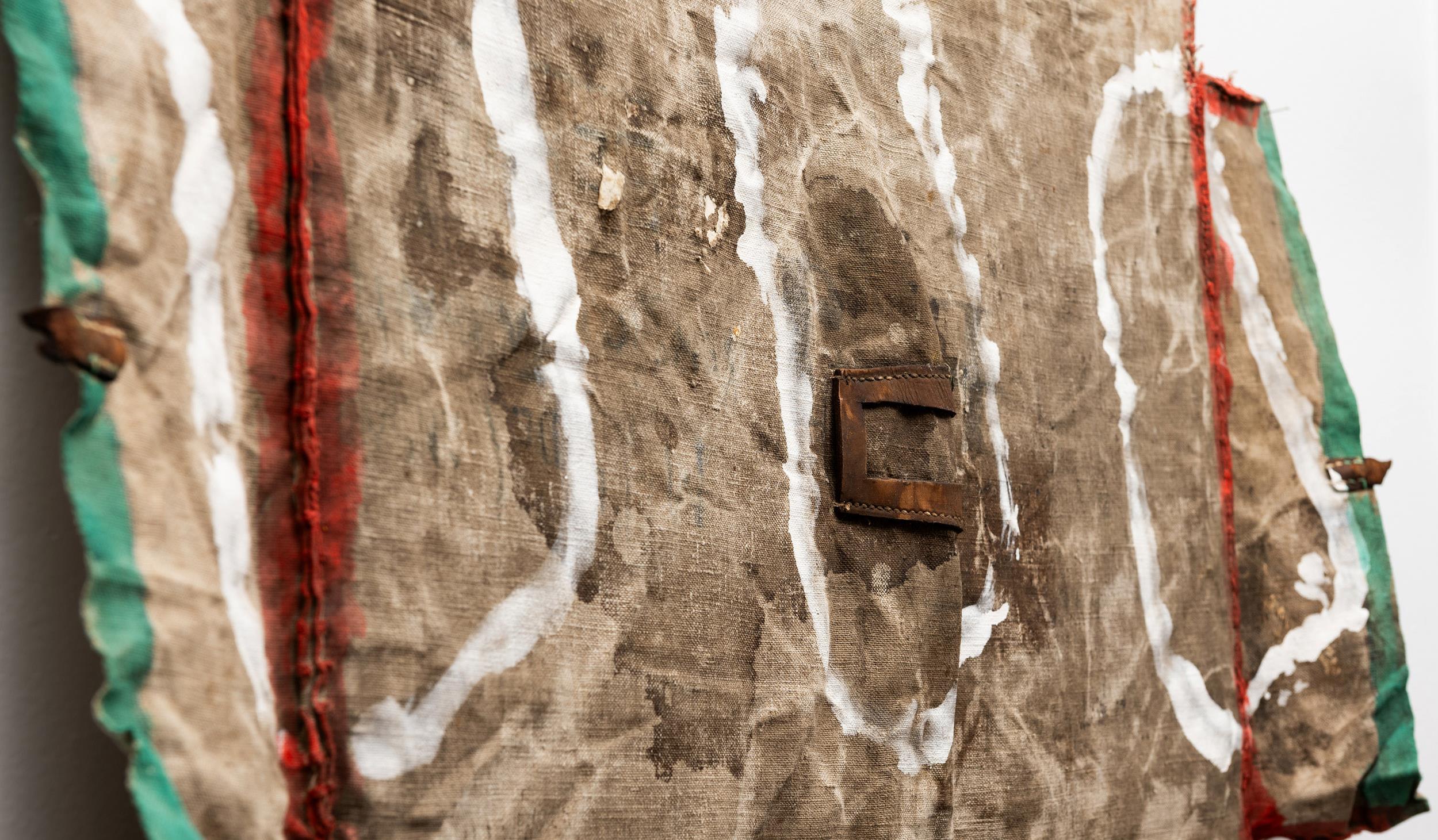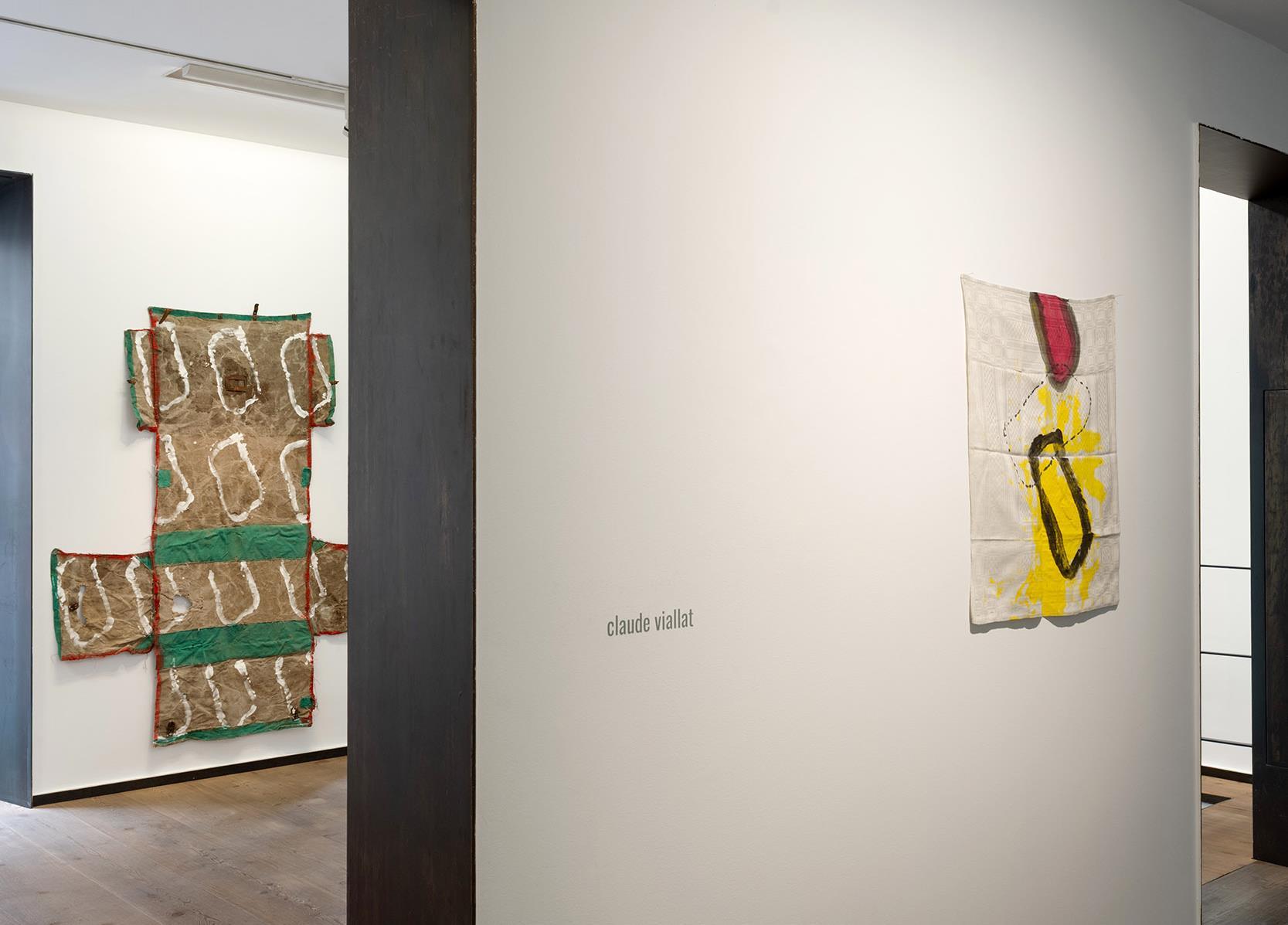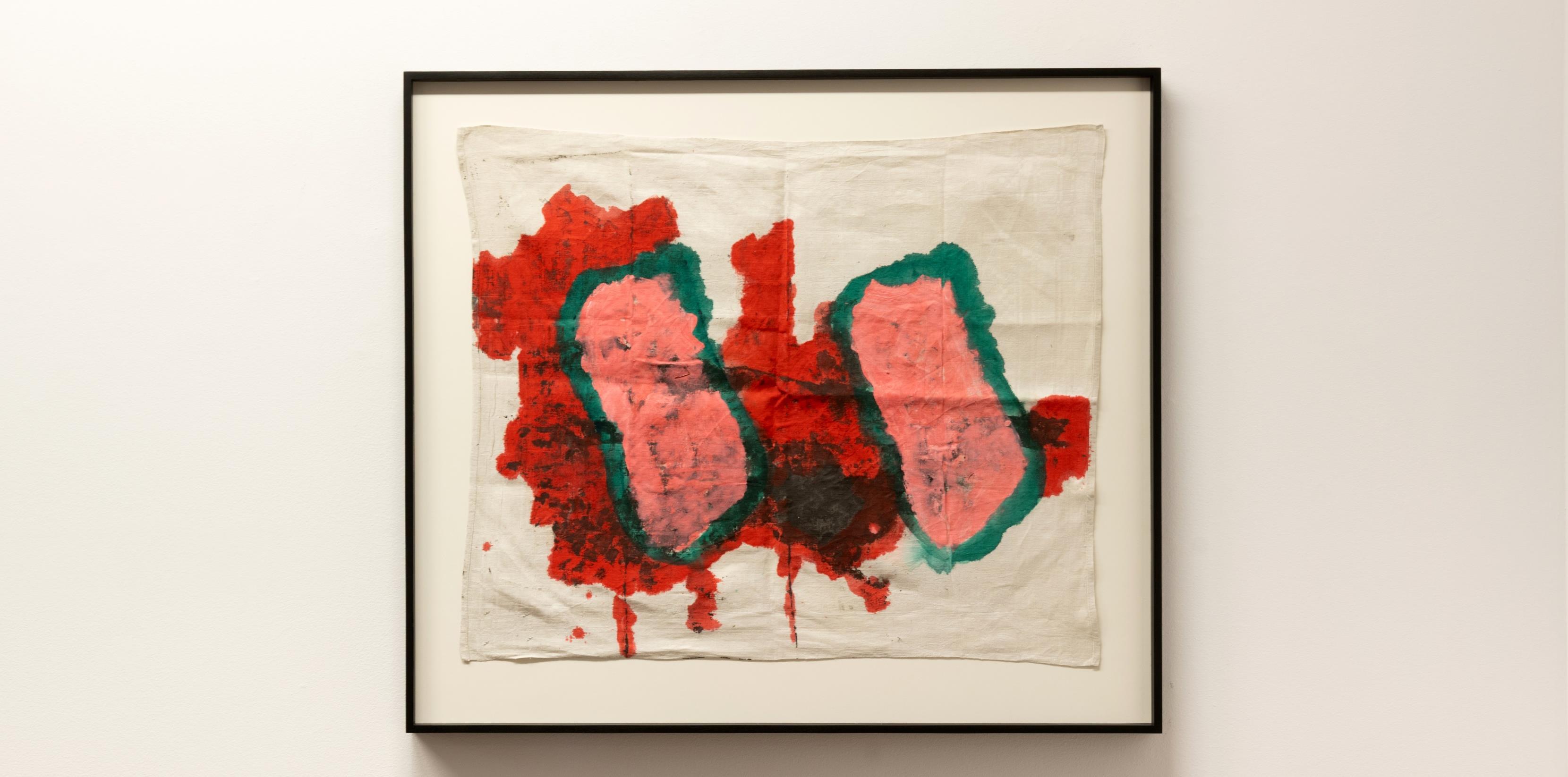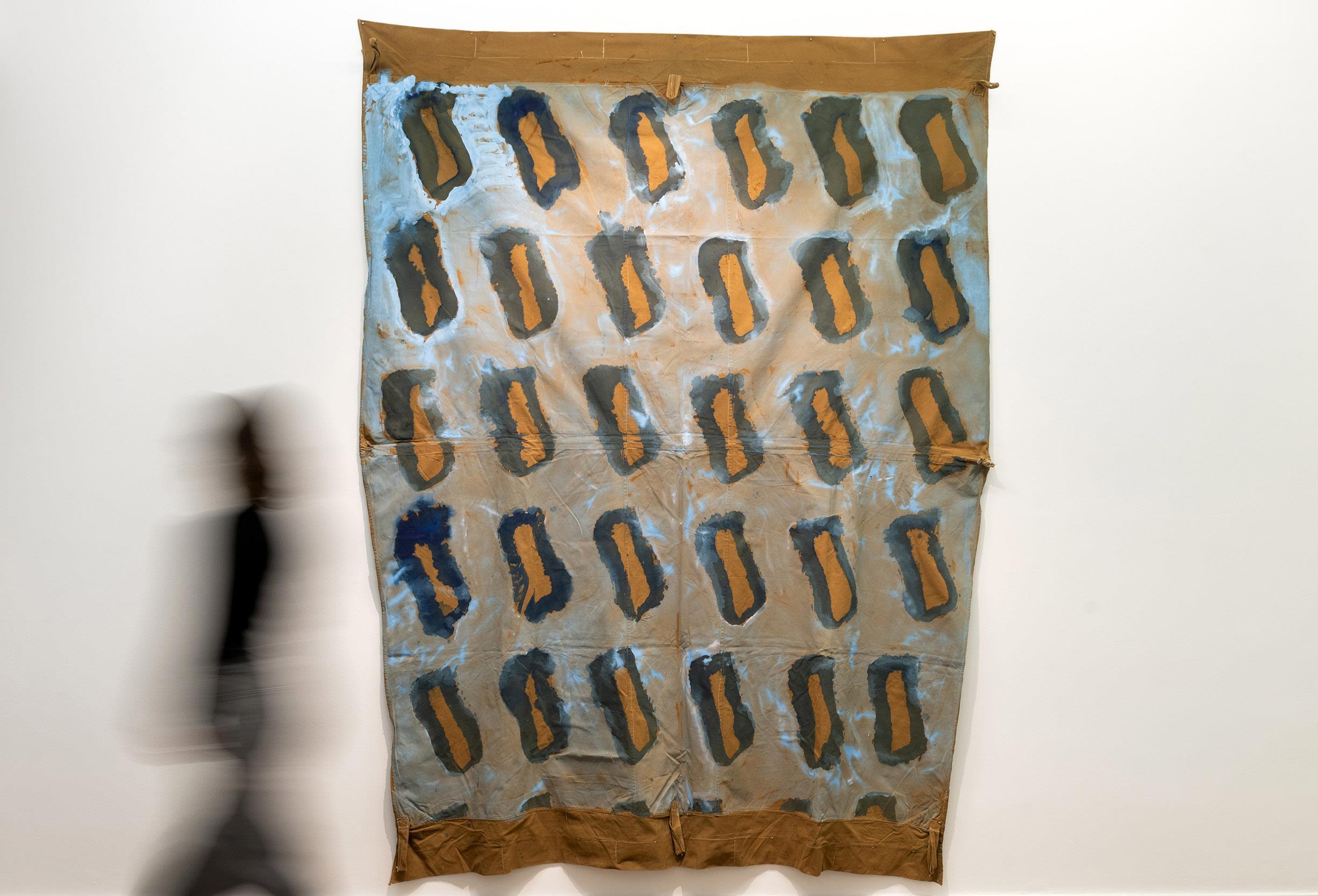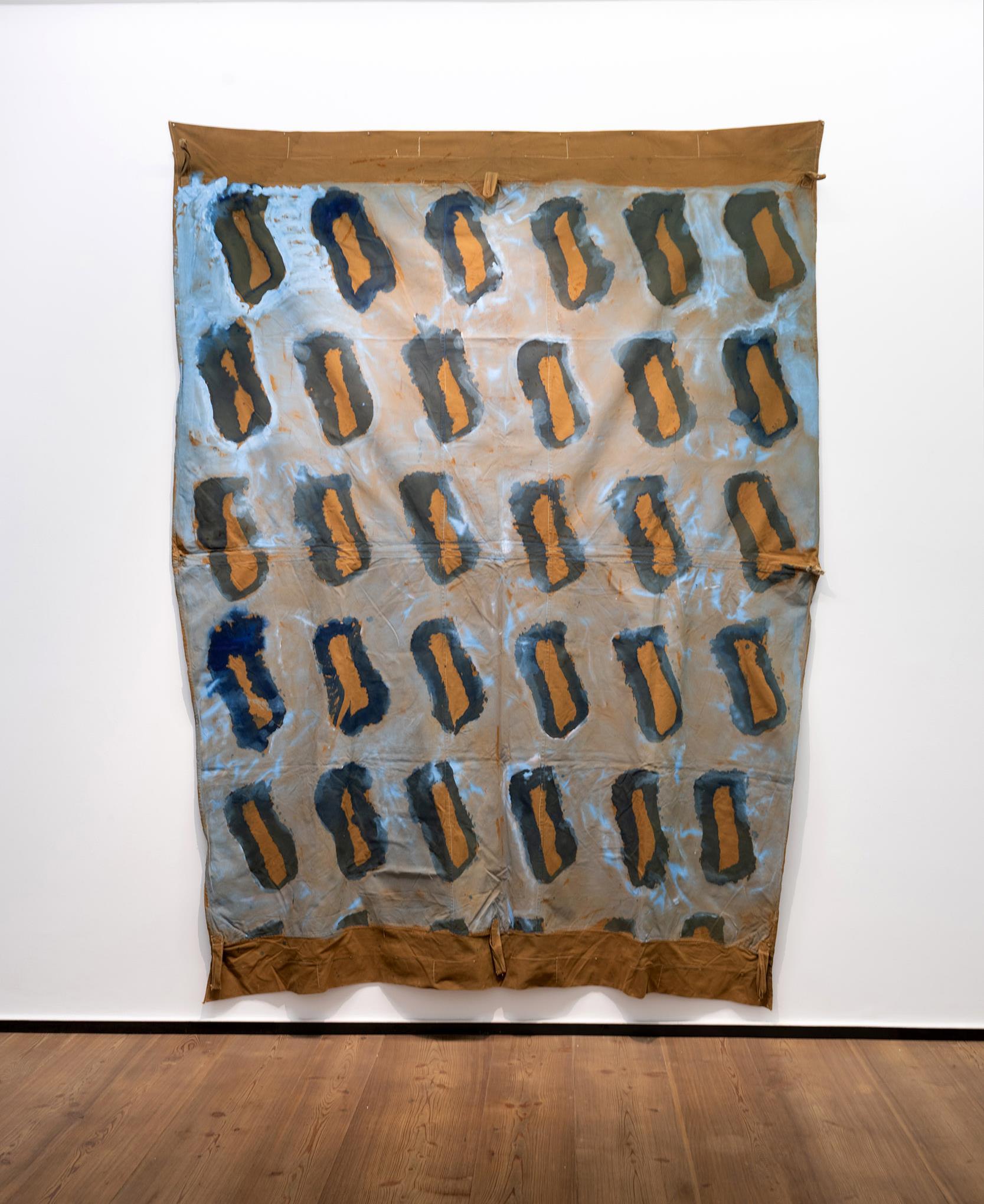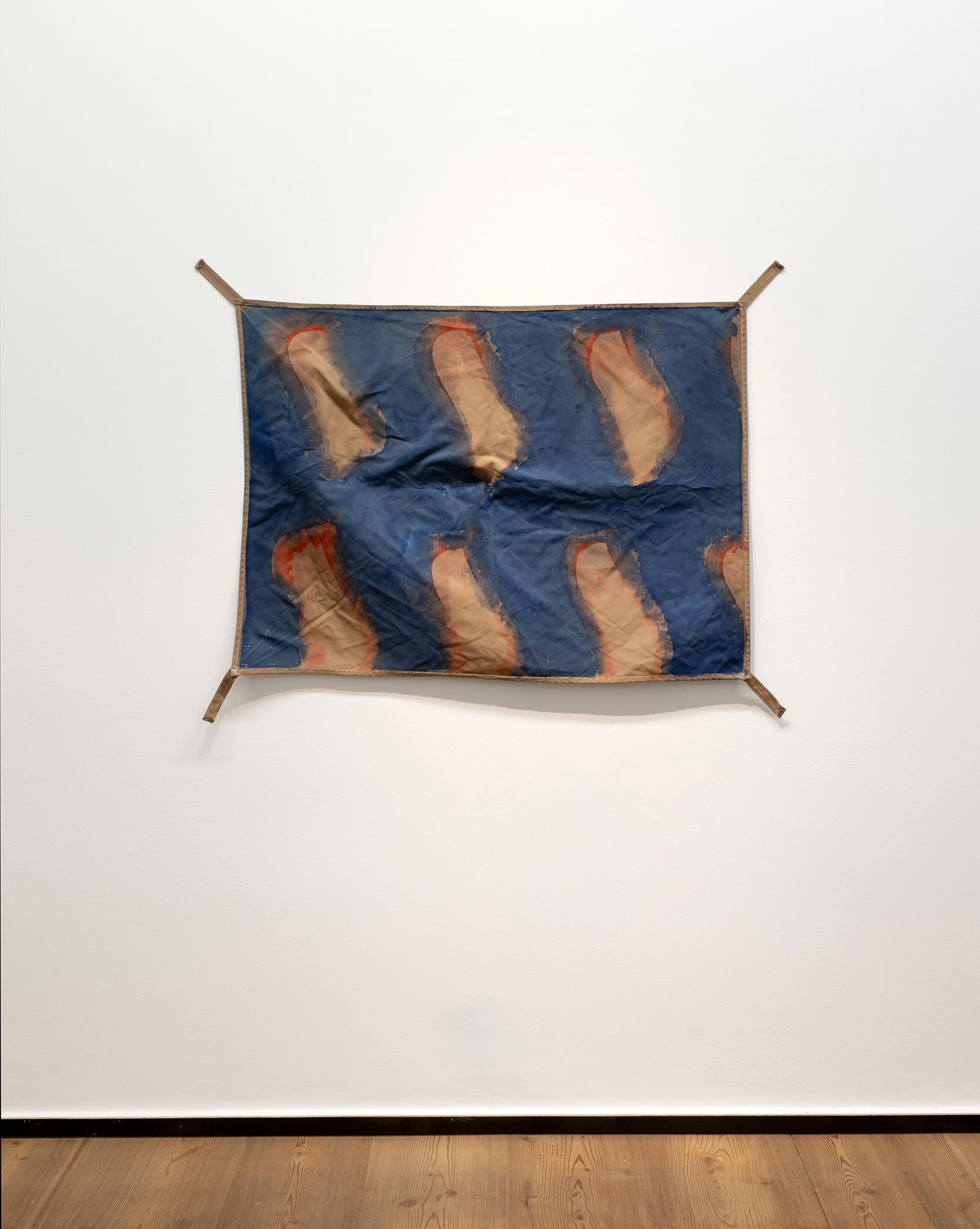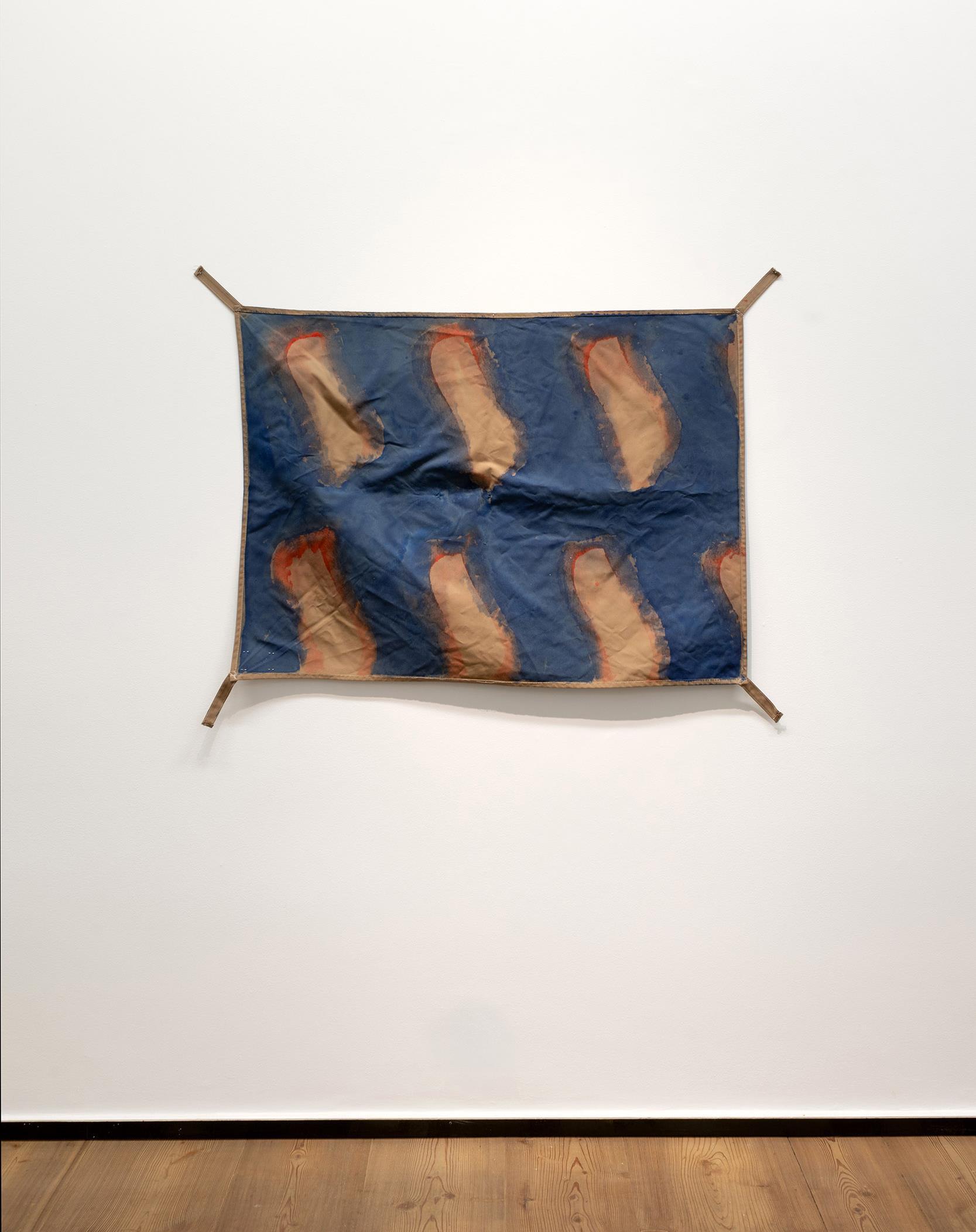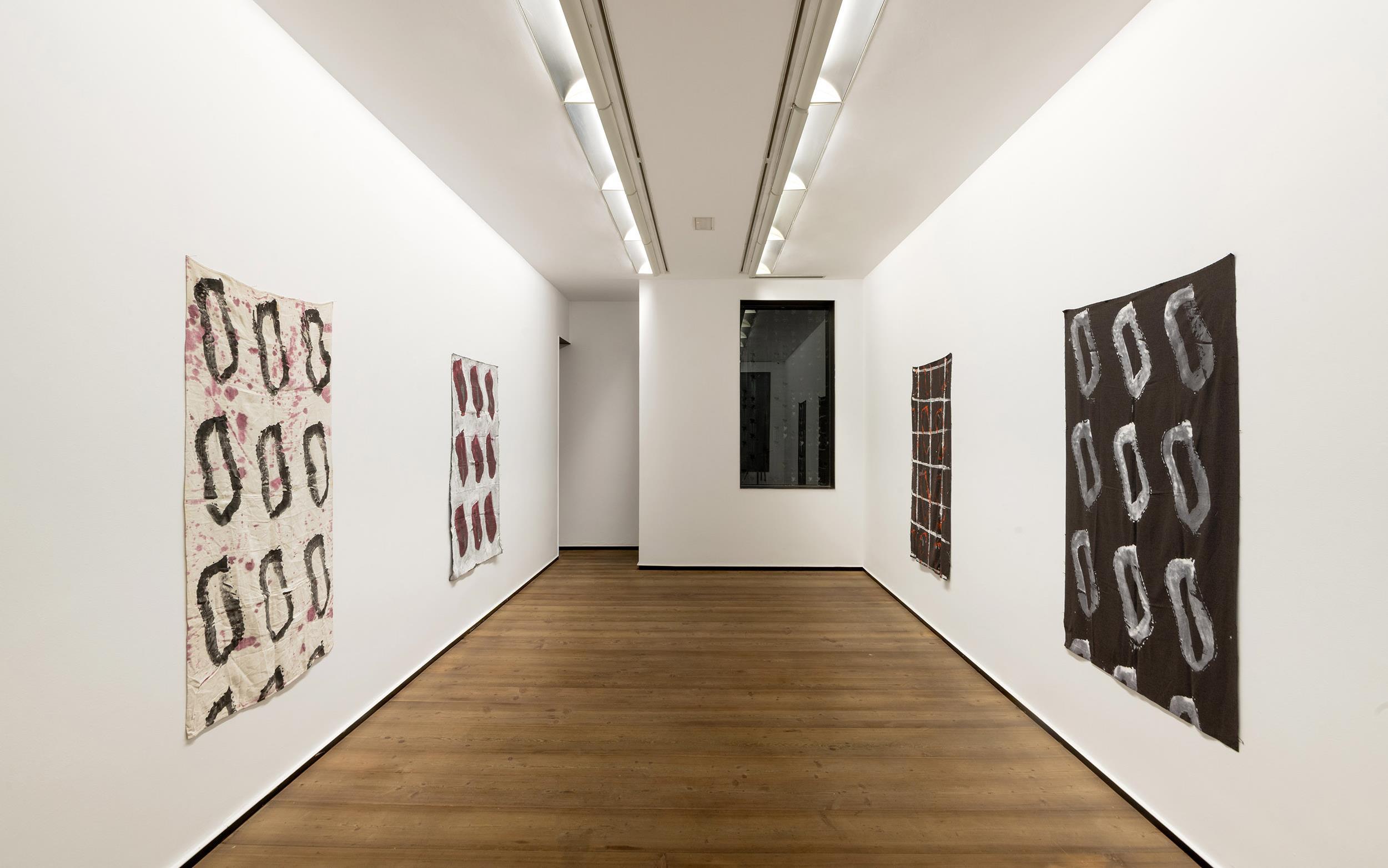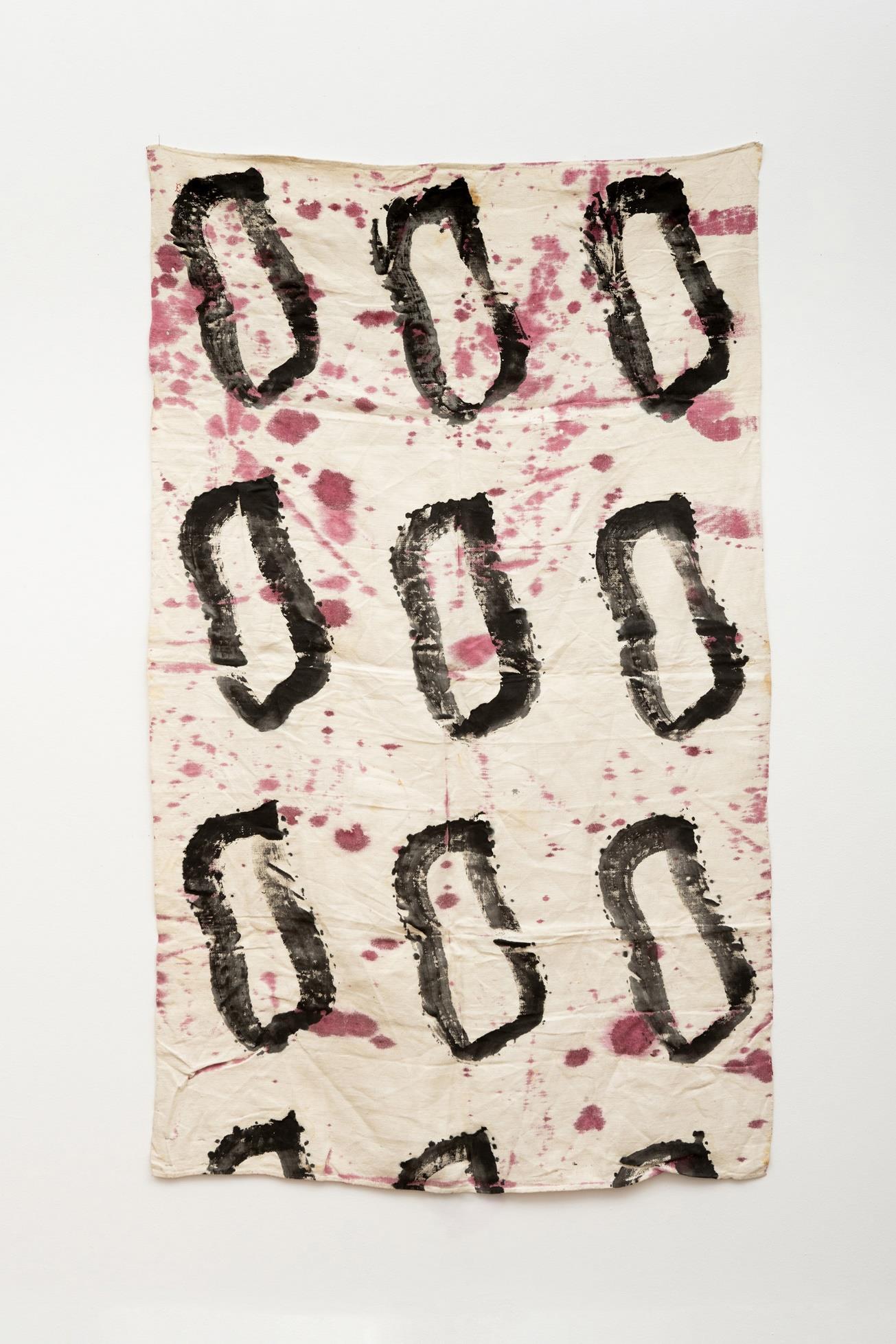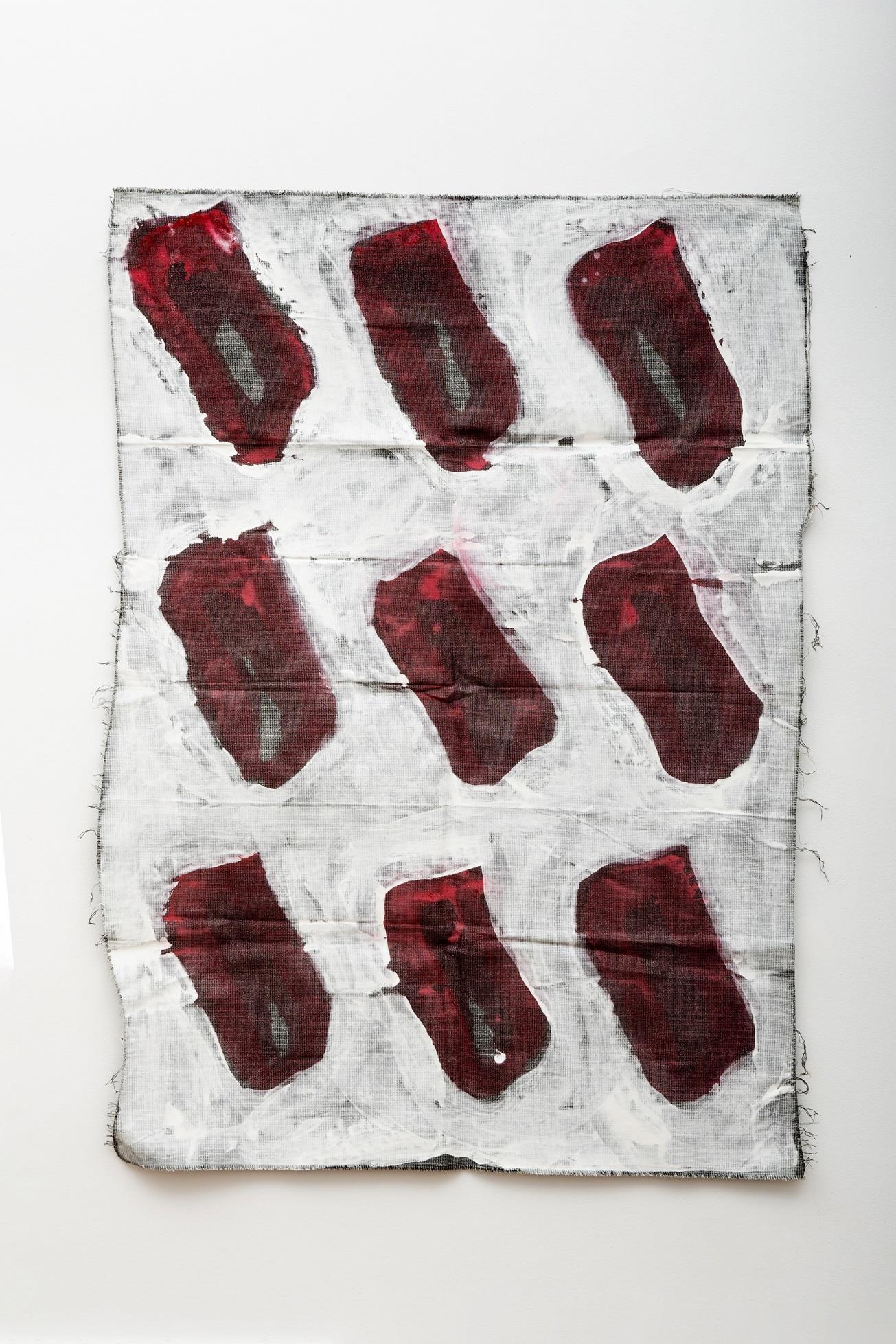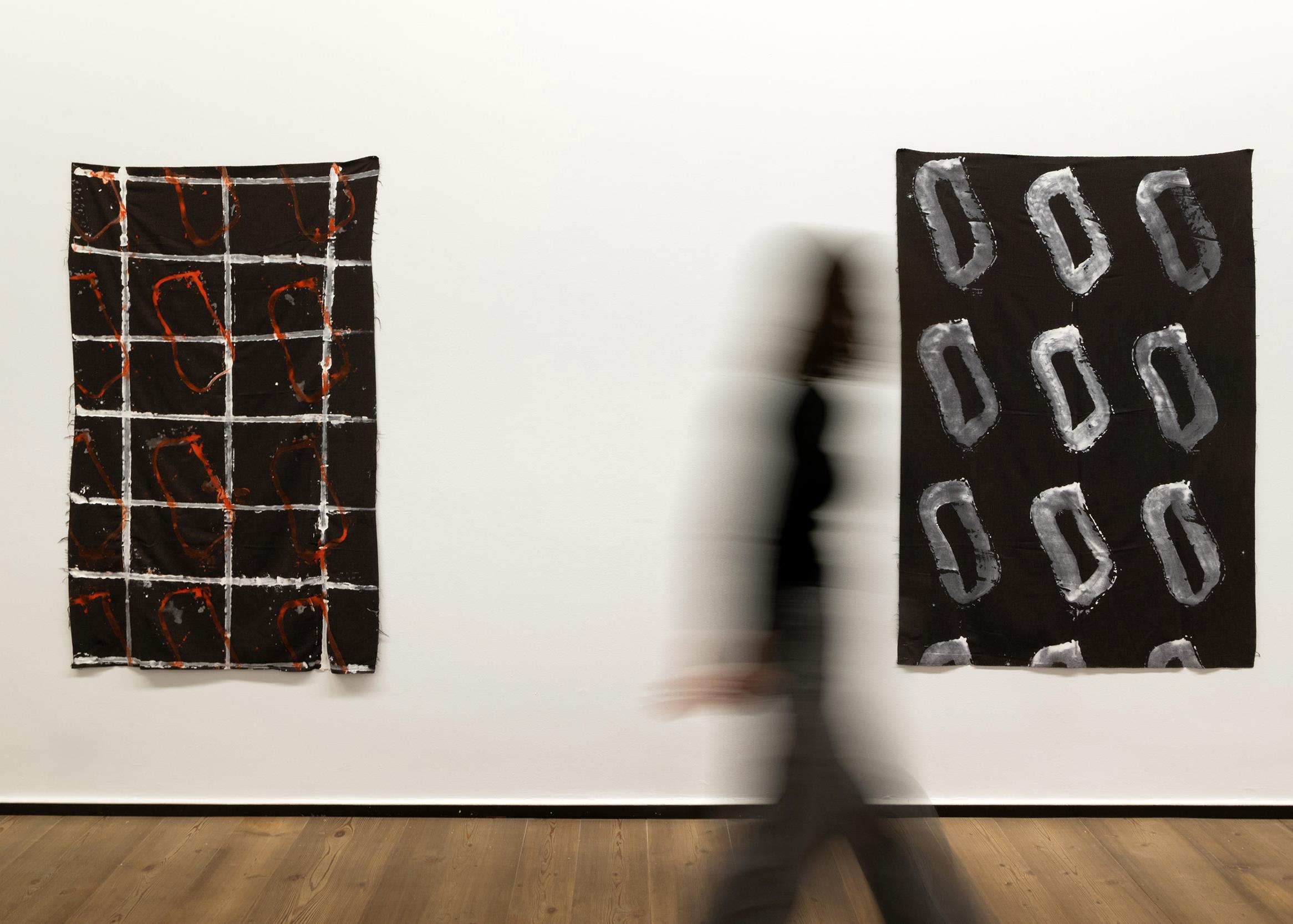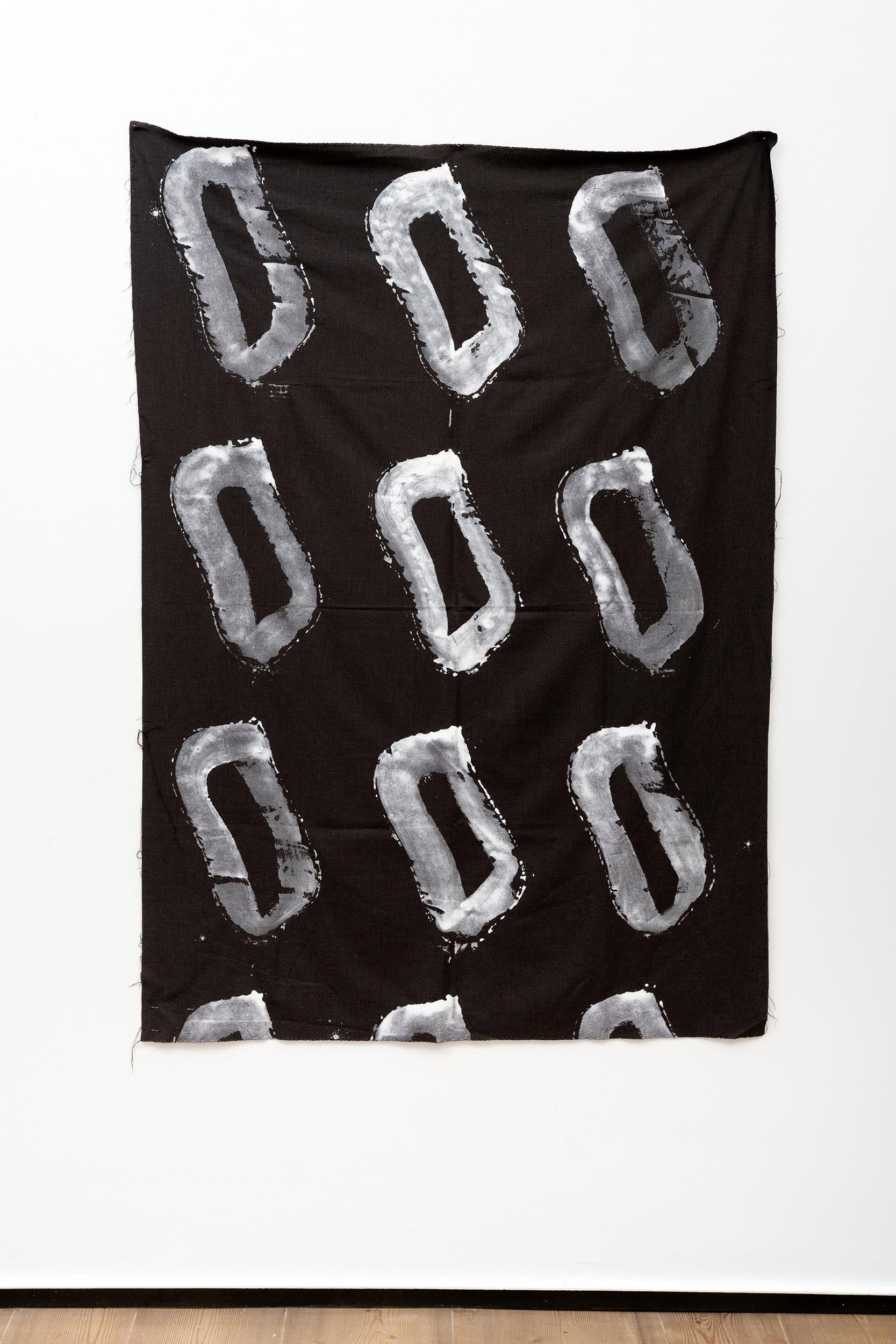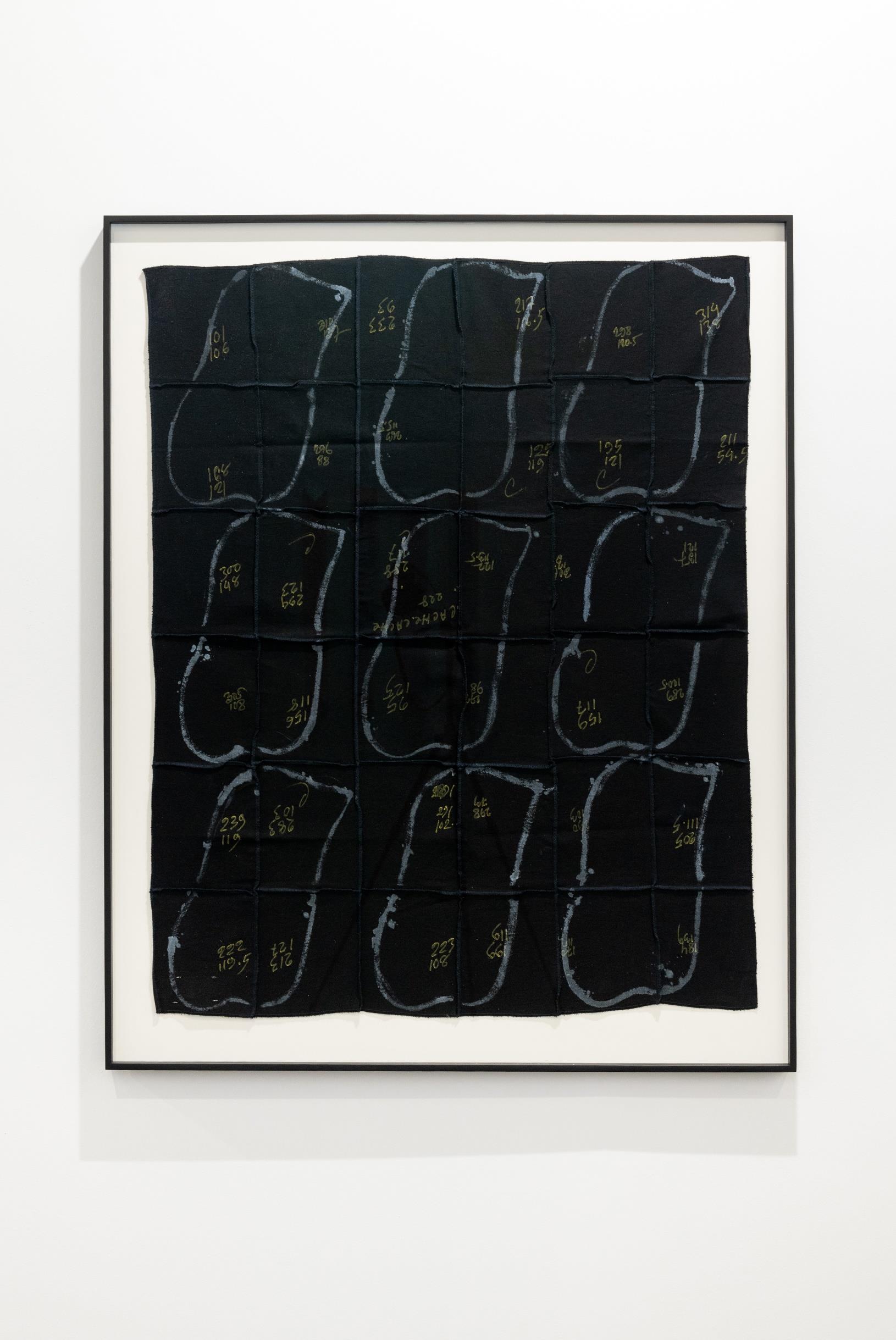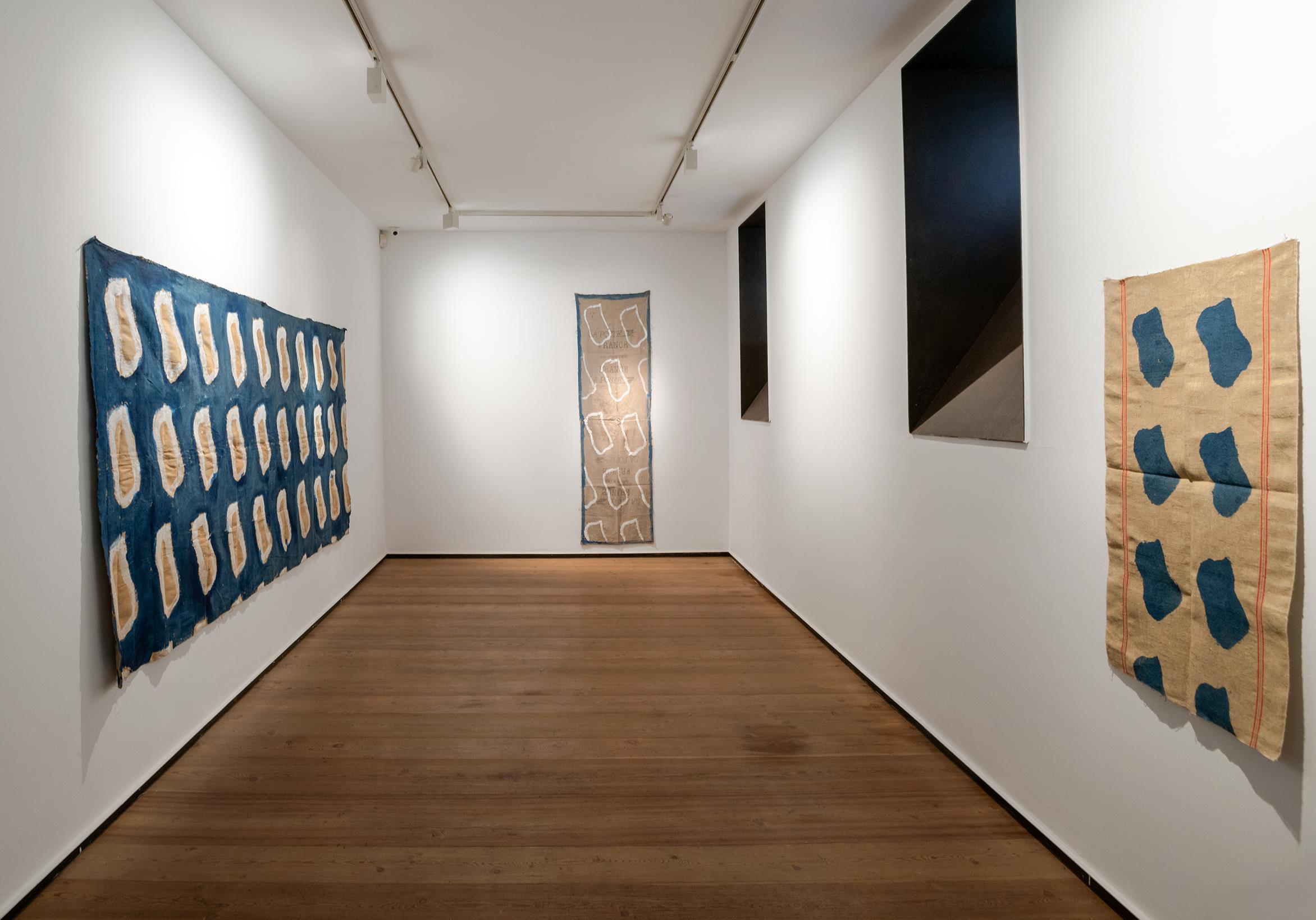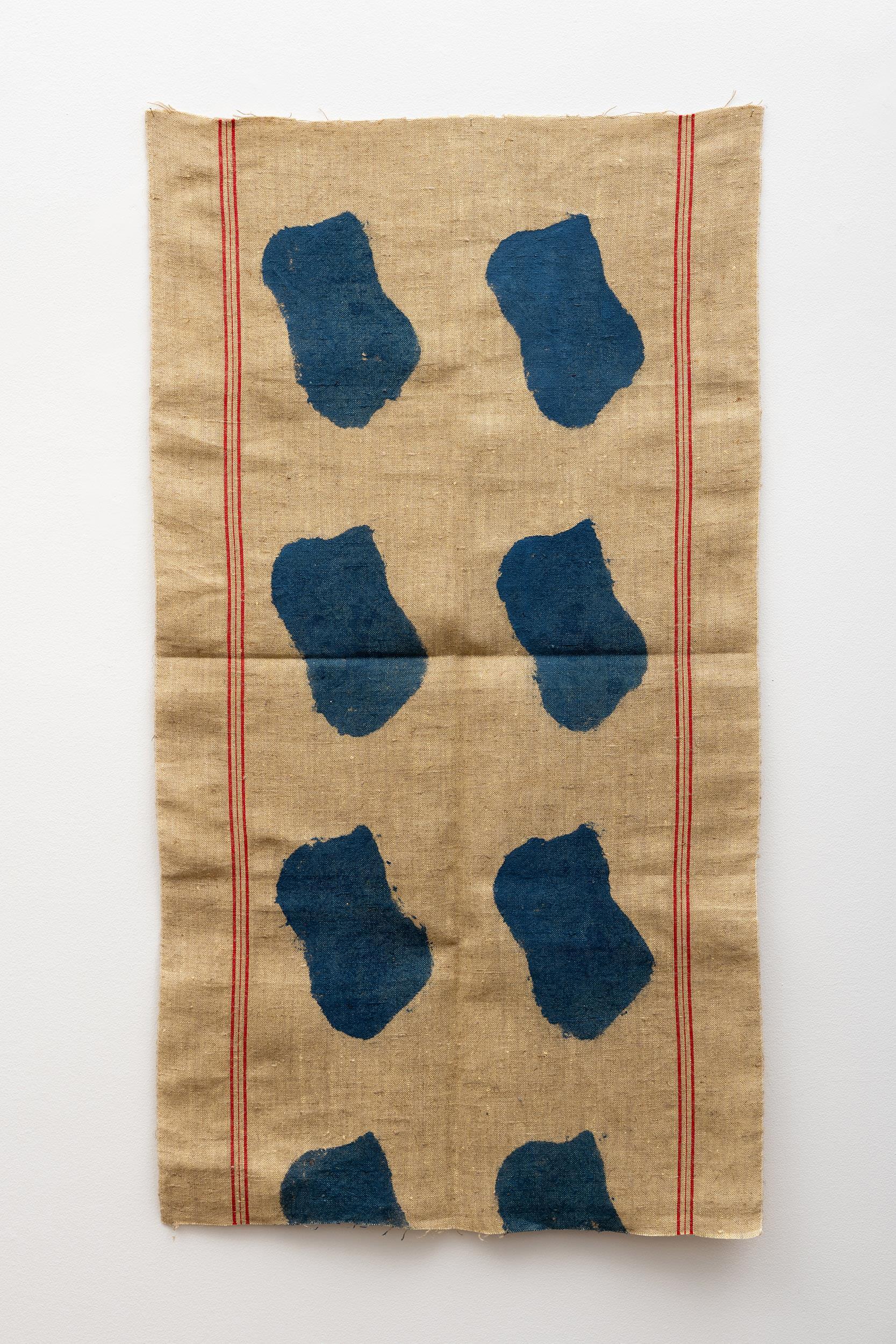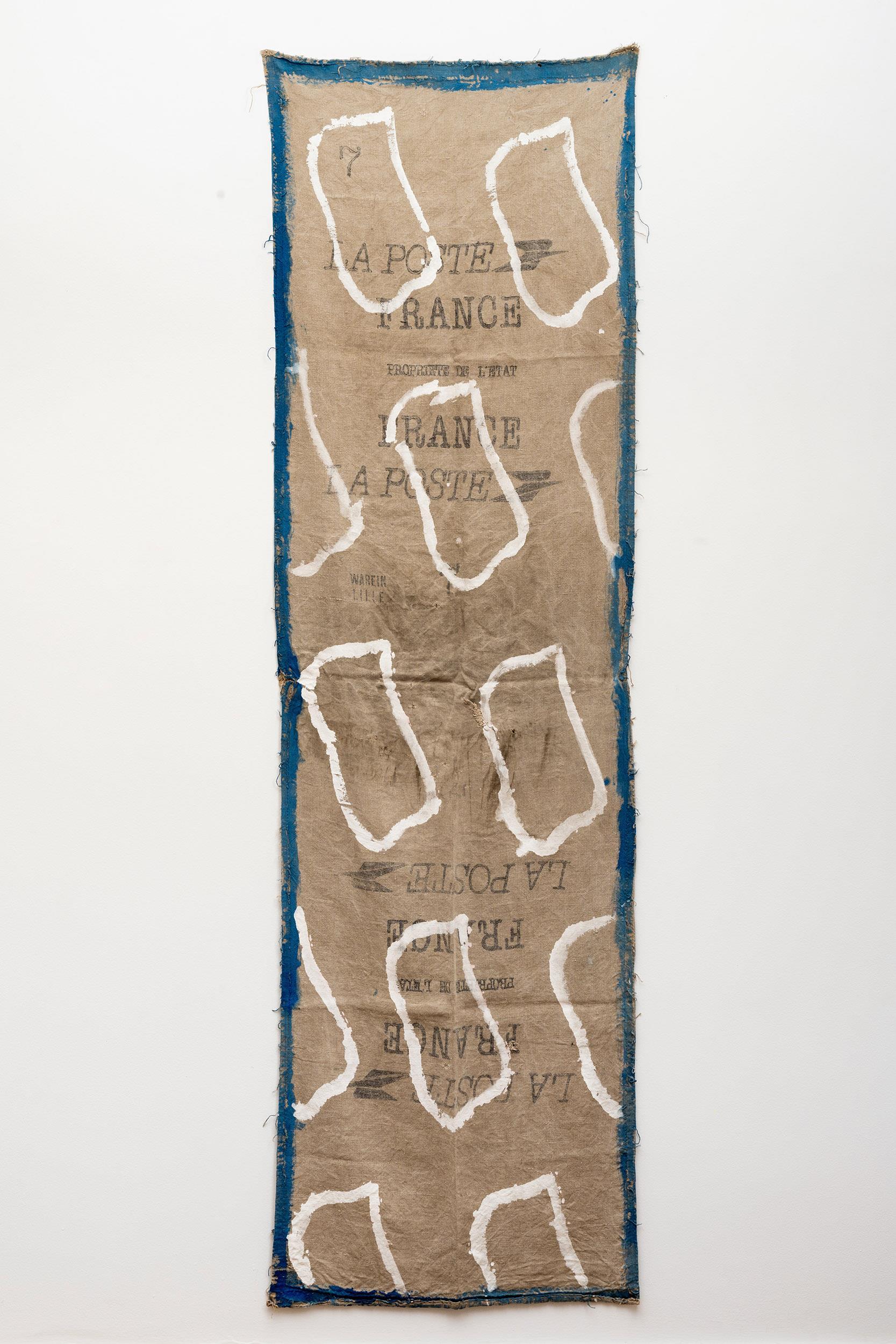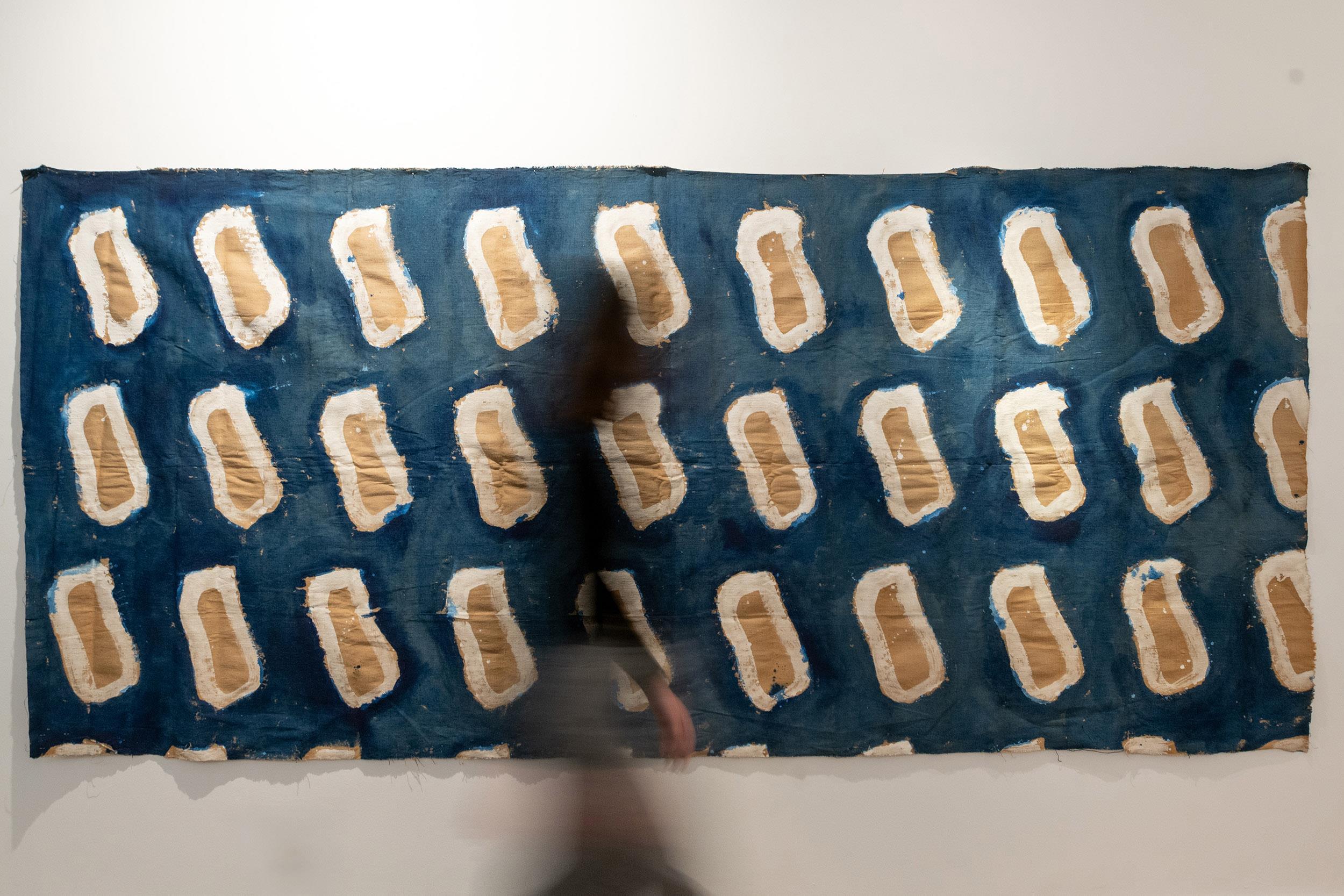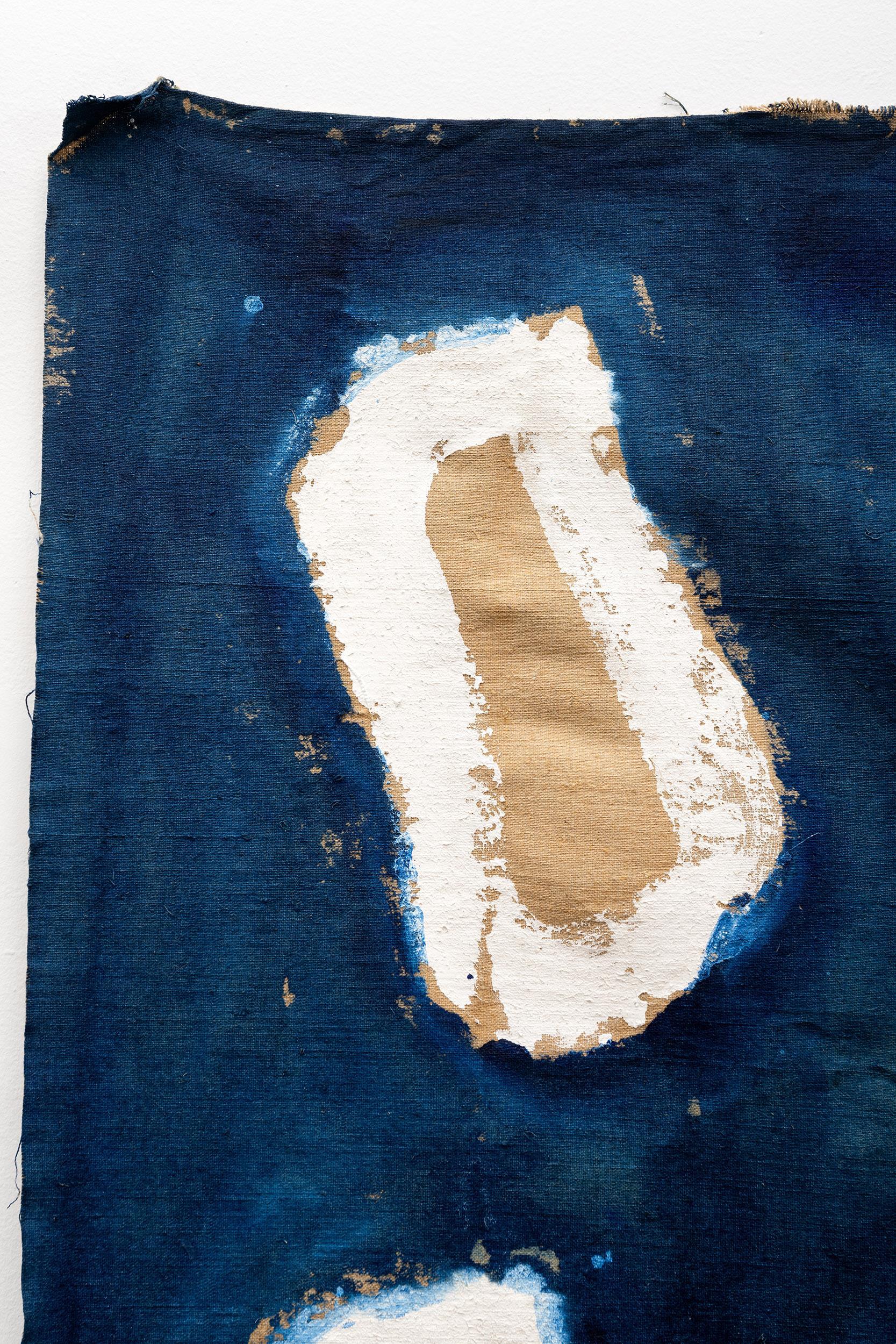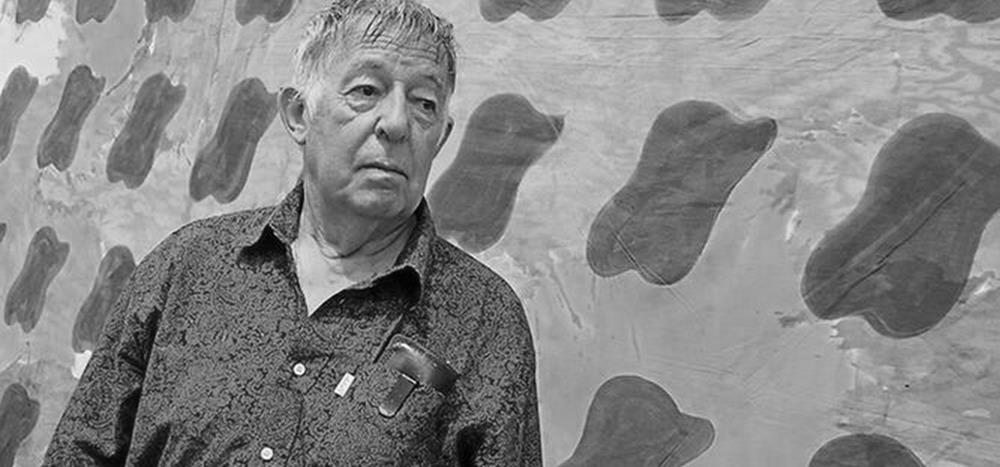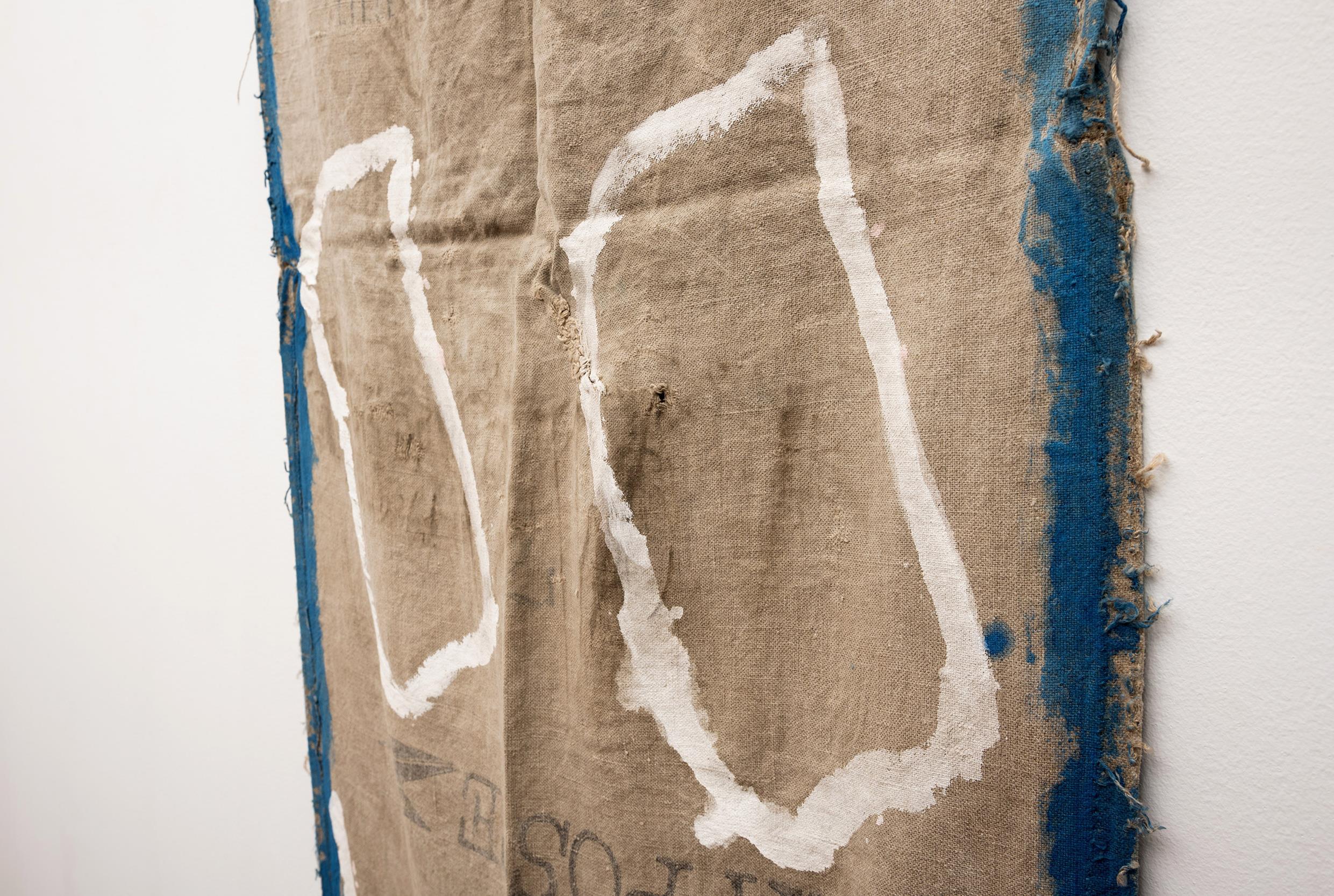CLAUDE VIALLAT
Nos complace presentar nuestra segunda exposición individual dedicada al pintor Claude Viallat (Nîmes, 1936), una de las figuras más influyentes del arte contemporáneo francés Esta muestra reafirma nuestro compromiso con su obra, tras haber llevado a cabo varios proyectos destacables en los últimos años, entre los que destacamos la primera presentación individual en ARCO17, con una cuidada selección de sus trabajos, y la gran pieza monumental que mostramos en ARCO19, entre muchos otros, consolidando así su presencia en el panorama artístico de nuestro país
La exposición llega en un momento clave, tras la reciente retrospectiva Et pourtant si… que se le dedicó hace poco más de un año en el Carré d’Art de Nîmes, su ciudad natal Esta muestra ha sido una de las más significativas dedicadas al pintor, reconociendo tanto su prolífica trayectoria como su fundamental contribución al arte contemporáneo.
Desde su estudio en Nîmes, donde ha desarrollado la mayor parte de su carrera, Viallat ha construido un lenguaje pictórico inconfundible basado en la repetición de una misma forma. Durante décadas, ha explorado infinitas variaciones de colores y texturas a través de la constante experimentación con todo tipo de soportes textiles, logrando resultados verdaderamente sorprendentes. En definitiva, sus obras desafían lo tradicional al tiempo que nos invitan a regresar a lo puramente esencial, y se alzan como un testimonio visual de la pintura en sí misma.
We are pleased to present our second solo exhibition dedicated to the painter Claude Viallat (Nîmes, 1936), one of the most influential figures in contemporary French art. This exhibition reaffirms our commitment to his work, following several outstanding projects in recent years. Among them, we highlight his first solo presentation at ARCO17, featuring a carefully curated selection of his works, and the monumental piece exhibited at ARCO19, among many others, further consolidating his presence in the Spanish art scene.
The exhibition comes at a key moment, following the recent retrospective Et pourtant si…, held just over a year ago at the Carré d’Art in Nîmes, his hometown. This exhibition has been one of the most significant ever dedicated to the painter, recognizing both his prolific career and his fundamental contribution to contemporary art.
From his studio in Nîmes, where he has developed most of his career, Viallat has built an unmistakable pictorial language based on the repetition of a single shape. For decades, he has explored endless variations of colors and textures through constant experimentation with all kinds of textile supports, achieving truly remarkable results. Ultimately, his works challenge tradition while inviting us to return to the purely essential, standing as a visual testament to the very essence of painting.
2007/300, 2007
Acrílico sobre saco postal
73 x 220 cm
210/2022, 2022
Acrílico sobre tela
64 x 187 cm
126/2019, 2019
Acrílico sobre tela 115 x 60 cm
2021/204
Acrílico sobre 189 x 157
2024/195, 2024
Acrílico sobre tela
76 x 64 cm
Sin título, 2024
Acrílico sobre papel
79 x 31,5 cm
2023/014, Acrílico sobre
x 76
2023/014, 2023
sobre tela 76 cm
2024/368, 2024
Acrílico sobre lona
275 x 209 cm
2024/449, 2024
Acrílico sobre tela
80 x 110 cm
"Una tela en sí, no es nada, lo importante es el proceso".
"A canvas in itself is nothing, what’s important is the process".
106/2020, 2020
Acrílico sobre tela
132 x 72 cm
Claude Viallat
2024/468, 2024
Acrílico sobre tela 157 x 94 cm
2024/185, 2024
Acrílico sobre tela
150 x 110 cm
419/2023, 2023
Acrílico sobre tela 150 x 97 cm
374/2023, 2023
Acrílico sobre tela 153 x 110 cm
503/2020, 2020
Acrílico sobre tela
110 x 88 cm
2007/001, 2007
Acrílico sobre paño
110 x 60 cm
2007/200, 2007
Acrílico sobre saco postal 227 x 70 cm
2024/092, 2024
Acrílico sobre tela
155 x 333 cm
Claude Viallat
Nîmes, 1936
Claude Viallat nace en 1936 en la ciudad de Nimes, donde todavía hoy reside y trabaja Será el principal impulsor del considerado último gran movimiento de las vanguardias artísticas en Francia: Support Surfaces (1969-1972) A pesar de su breve vigencia, su impacto en la Historia del Arte fue muy notable ya que puso en tela de juicio las convenciones pictóricas, empezando por los soportes del cuadro, como son el bastidor o la tela, tratando de romper el orden establecido y empezar de nuevo.
Su práctica artística fue radical, y cuestionó los fundamentos del arte, la pintura y su ecosistema. Claude Viallat manipulará telas sin bastidor y va a sustituir el lienzo por tejidos de uso cotidiano, como sábanas, estores, telas de sombrillas o de tiendas de campaña. Incluso ha llegado a trabajar las superficies por los dos lados, con procesos de pintura, impregnación y plegado
Además, defiende “la pintura por la pintura” sin necesidad de que exista un tema o pretexto en las representaciones artísticas En su caso, desarrolló un nuevo lenguaje formal tomando como motivo recurrente la misma forma rectangular de esquinas redondeadas desde hace más de cincuenta años, que determinará la composición de sus obras.
La repetición y la aparente simplicidad presentes en todas sus obras contradicen la complejidad de sus sutiles cambios de tamaño, formatos y contrastes. Él mismo describe la pintura como "un temblor, una incertidumbre interior, un compromiso de cambiar, de infringir, de subvertir el conocimiento y la conciencia".
Viallat se encuentra representado en destacadas instituciones y colecciones a nivel internacional. Su obra ha sido objeto de exposiciones individuales entre las que destaca especialmente su retrospectiva en el Centre National d'Art et de Culture Georges Pompidou (Museo Nacional de Arte Moderno de París) en 1982 y su participación en la Bienal de Venecia en 1988, además de otras más recientes como la del Museo Fabre de Montpellier, el Museo Ludwig de Coblenza, Alemania o el Museo MuBe de Brasil.
Born in 1936 in Nimes, where he still lives and works today, Claude Viallat was the prime mover of what is considered to be the last great movement among the artistic avant-gardes of France: Supports/Surfaces (1969-1972). Despite its brief period of ascendency, its impact on art history was very significant since it called into question the pictorial conventions, starting with the support media for paintings, such as frames and canvases, trying to smash the established order and start again.
Claude Viallat’s artistic practice was radical, and he questioned the fundamentals of art, painting and its ecosystem. He worked manipulating fabrics without frames and replaced canvases with everyday fabrics, such as bedsheets, roller blinds, and the fabrics of umbrellas and tents He went as far as working with both sides of his surfaces, with painting, impregnation and folding processes
In addition, the artist defends "painting for painting's sake" without the need for a theme or the pretext of artistic representations. In his case, he developed a new formal language, taking as a recurring motif the same rectangular shape with rounded corners for more than fifty years, which determined the composition of his works.
The repetition and apparent simplicity present in all of his works belie the complexity of their subtle changes in size, formats, and contrasts. He himself describes painting as "a tremor, an inner uncertainty, a commitment to change, to infringe, to subvert knowledge and consciousness"
Viallat is represented in leading international institutions and collections His work has been the subject of individual exhibitions, and among the most notable have been his retrospective at the Center National d'Art et de Culture Georges Pompidou (National Museum of Modern Art in Paris) in 1982 and his participation in the Venice Biennale in 1988, as well as of other more recent ones such as the Fabre Museum in Montpellier, the Ludwig Museum in Koblenz, Germany and the MuBe Museum in Brazil.
ESTE CATÁLOGO DE


